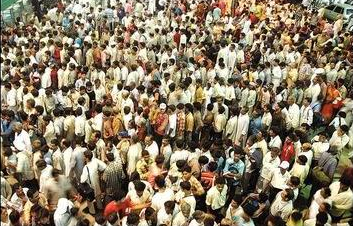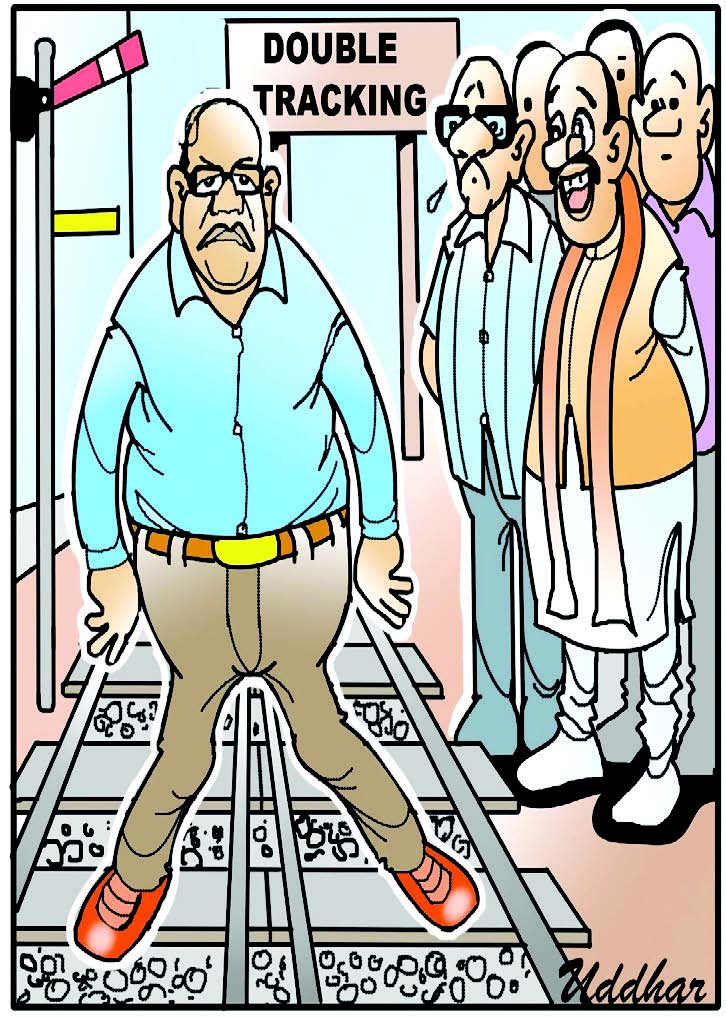
Gladstone D’Costa
In August 2018, 125 MPs wrote to the President, asking for the implementation of a two-child policy norm in India. In July 2019, a ‘Population Regulation Bill‘ was placed before Parliament, calling for action against people with more than two living children. This private member’s Bill was introduced by RSS ideologue Rakesh Sinha, MP. On 7 February 2020, Anil Desai, a Shiv Sena MP introduced a Bill to amend Article 47 of the Constitution to 47A. (The Constitution Amendment Bill, 2020). In March, Congress leader Abhishek Manu Singhvi also introduced a bill to enforce two-child norm across the country. More recently, BJP MP Anil Aggarwal urged PM Narendra Modi in a letter, to table a bill in the next session of Parliament, to check population explosion. To connect the dots, one has to start with the proposed constitutional amendment.
The original Article 47 of the 1947 Constitution reads: “The State shall regard the raising of the level of nutrition and the standard of living of its people and the improvement of public health as among its primary duties.” The proposed 47A Amendment will read “The State shall promote small family norms by offering incentives in taxes, employment, education etc. to its people who keep their family limited to two children and shall withdraw every concession and deprive such incentives from those not adhering to small family norm, to keep the growing population under control.” In other words, the State will abdicate its responsibility to look after the health of the nation by making it applicable only to those married couples who fulfil the two-child norm. It will no longer be responsible for improving the nutritional levels, standard of living, public health and well-being of any couple not adhering to the two-child policy.
This clears the path for imposing various sections of the Population Bill, without legal hindrance. Section 6 provides for benefits to couples who have only one child and voluntarily undergo sterilisation. These include preference to the single child for admission in the institutes of higher education, selection in government jobs and such other benefits; ignoring the fact that one child policies create social insecurities and aggravate ageing population dependencies. Section 7 will make the couple eligible for payment from the central government of Rs 60,000, if the single child is a boy or Rs 1 lakh in case of a girl.
Section 8 states that in the case of a couple having more than two children, both husband and wife shall be debarred from contesting in Lok Sabha, State Legislature, and Panchayat elections; getting elected to the Rajya Sabha, the State Legislature, and similar elective bodies; getting promotion in government services; applying to ‘Group A’ jobs under the Central and State Governments, and receiving any kind of Government subsidy. Section 12 states that all employees of the Central Government shall submit an undertaking in writing to the respective appointing authority after one year of commencement of this Act that they shall not procreate more than two children. Employees who already have more than two children, at the commencement of the Act shall submit an undertaking that they shall not procreate any more children. Section 13 provides that the central government when recruiting employees shall give preference to candidates having two or less than two living children. And finally, Section 15 provides for power to override laws.
The statement of Objects and Reasons states that India “will have a population of 1.6 billion by 2050. Such a large population presents eminent challenges to ensure the provision of the basic necessities of human life including affordable food, safe drinking water, decent housing, access to quality education, economic livelihood opportunities, power/electricity for domestic consumption, and a secure living.”The document continues “given the limited ecological and economic resources, it is imperative to introduce measures to curb this trend of population explosion”. The entire Statement of Objects and Reasons presents arguments that are deeply flawed with statistics that are grossly inaccurate and fanned by communal statements by prominent political leaders.
Data till August 2019 indicates that rather than a ‘population explosion’, India shows a shrinking trend. Indian women had a total fertility rate (TFR) of almost 6 in 1960; that number fell to 2.2 by 2018, close to the replacement levels of 2.1. According to the 2018-2019 Economic Survey (chapter 7), the annual rate of growth of India’s population was 2.5% from 1971-1981; but fell to 1.3% a year from 2011- 2016. The survey estimated the TFR in 2021 could be 1.8. Interestingly, the TFR among Muslims is falling faster than it is among Hindus. The issue of a high TFR of 3.0 is largely confined to the rural communities of nine states in the North and north-east of the country. The TFR in 24 States is already below replacement levels of 2.1.
The Lancet recently published a research paper which indicates that the TFR in India will fall to 1.89, well below replacement levels, by 2100. This drop is more rapid than previously anticipated, and linked to female education and contraception.
Already the pandemic threatens to force 200 million people back into poverty. To introduce a bill based on misrepresentation, penalising large sections of society, by proposing to “withdraw every concession and deprive such incentives to those not adhering to small family norm,” borders on criminal intent. The worst off will be the women of our country who will be forced into marriage and reproduction; and then compelled to undergo sterilisation, unsuitable contraception, like the use of hormones, and even female infanticide due to pressures for at least one male child.
Even as the “basic structure doctrine” suggests that parliament cannot breach fundamental rights enshrined in the constitution, I sincerely hope that brute majoritarianism does not propel us into an era worse than the days of forced vasectomies of the past.
(The writer is a founder member of VHAG)
